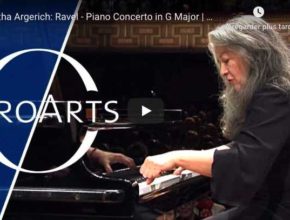
Blog


Brahms – Piano Sonata No. 3 (3st mov) – Grimaud
The Piano Sonata No 3 in F minor, Op. 5 of Johannes Brahms was written in 1853 and published the following year. The sonata is unusually large, consisting of five movements, as opposed to the traditional three or four.




Chopin – Waltz No. 3 – Grimaud, Piano
Chopin’s Waltz No 3 in A minor was written in 1834 and published in 1838. Frédéric Chopin’s waltzes are pieces of moderate length adhering to the traditional 3/4 waltz time, but are remarkably different from the earlier Viennese waltzes in that they were not designed for dancing but for concert performance.



Piano Sonata No. 2 (Chopin) – Yuja Wang
Chopin’s Piano Sonata No. 2 in B-Flat Minor, Op. 35, is a piano sonata in four movements. Frédéric Chopin completed the work while living in George Sand’s manor in Nohant, some 250 km (160 mi) south of Paris, a year before it was published in 1840. The third movement of the Piano Sonata No 2 is Chopin’s famous funeral march.
